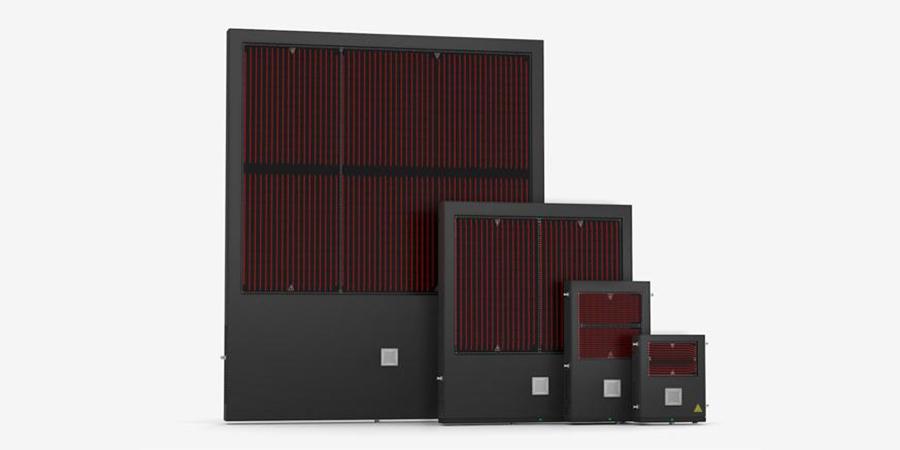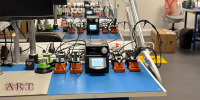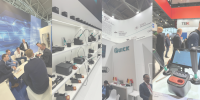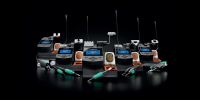
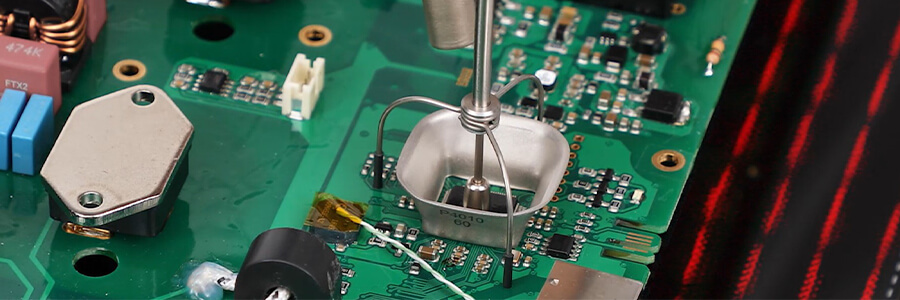

Benchtop Preheating - Why Preheat Your PCBs?
PCB Preheaters, in some variety, should be a staple of your assembly and rework kit.
However, for many soldering practitioners it is not always the case.
In this post, we hope to shed some light on preheaters, giving you a better understanding of their benefits, the types of preheater available, and some other handy pointers that can help you decide on the best PCB preheater for your application.
What Is a PCB Preheater?
It is important to clarify the process of preheating and its aims before we discuss the benefits.
The application of a preheater is indispensable to the rework process for multi-layered PCB applications or large ground planes. It helps to avoid both thermal shock and to better facilitate the soldering and desoldering process.
When you preheat a PCB, you are slowly increasing the temperature of the entire assembly process, from room temperature to that of just below the melting point of solder.
Components are monitored through controlled temperature profiles. This is within the recommended limit values for each application
Benefits Of PCB Preheaters
Activates Flux
The flux is the substance that burns off once the soldering iron has been applied to the wire. It is a crucial part of the soldering process aiding in the prevention of oxidisation and helps to keep a strong solder joint.
With a preheated PCB, the oxides that cause oxidisation are cleansed upon flux activation. This enhances the wetting process.
When the preheat temperature is too low, it can have a knock-on effect to the effectiveness of the flux activation, resulting in cold solder joints.
Prevents Thermal Shock
Thermal shock occurs upon the rapid heating of an isolated part of your PCB - this will be at a different rate to the rest of the board.
Consequently, this can create thermo-mechanical stress which fractures the board or crack other components that have lower thermal expansion rates.
Increasing the temperature of your PCB both consistently and linearly reduces thermal stresses. Through the gradual heating of the PCB, you protect the PCB and components from thermal shock.
Where thermal shock occurs, components and even your PCB can begin to crack.
PCBs That Have Heavy Ground Planes
Ground planes on a PCB are the large layers (or areas) of copper foil, connected to the circuits ground point.
Where a high copper content is present it can make rework tasks more difficult and a slower process. This is because copper dissipates heat as it is an excellent conductor of heat. This narrows the window of where you are operating at the desired temperature for your application.
Without preheating, increasing the operating temperature is your only other solution - and not one that we recommend!
Preheating aims to increase the window of time that the operator can work on these ground planes, circumventing the heat dissipation properties of the copper in your PCB.
Types Of Preheaters Available
IR Preheaters
The main benefit of using an Infrared preheater is their low thermal inertia. With high heating capacities, they provide a fast response for heating your targeted profile, with many thermocouples available for monitoring.
These preheaters will heat up your PCB using infrared lamps, heating to temperatures between 50-250 ºC. The response time for the increase in temperature is fast enough to be measured in seconds rather than minutes.
IR preheaters play a crucial role in modern soldering, with the increased prevalence of high mass and lead-free PCBs. The heat from the underside of the board allows operators to complete their tasks with more care and precision.
JBC provide an extensive range of these kinds of preheaters, catering for small to extra-large PCBs.
Hot Plates
Hot plates are often your budget or low-cost answer to preheating your PCBs.
They consist of an iron plate that has parallel strip heaters attached to the underside.
These types of preheaters are ideal in scenarios where the soldering parameters do not alter much during the assembly process. They also include a high thermal mass, which depending on model of preheater you use, can be toggled to conserve energy.
Hot plates are self-cleaning as any residue build up will be burnt off. The performance of the unit is also unaffected by changes in the environment - such as the opening of hoods or doors.
A good example of a hot plate is the Quick 870ESD.
Preheater Ovens
A preheating oven can yield the ideal uniform temperature profile that your application requires.
They are usually a far greater investment that the above desktop solutions but can provide excellent results.
However, the main drawback for PCB ovens, it is that you cannot carry out repair works whilst in the oven. Similarly, it is not possible to quickly cool these solder joints once they have been in the oven.
To Conclude...
We hope this article has improved your understanding as to why preheaters are an important part of PCB assembly.
Minimising thermal stress, activating the flux and reducing exposure to molten solder are just a few of the benefits that preheaters can bring you. So, investing in a preheater will always bring value to your assembly process.
For any further advice on preheaters, or to discuss your preheating requirements in further detail, email our experts on [email protected] or call us on 023 8065 0065.


